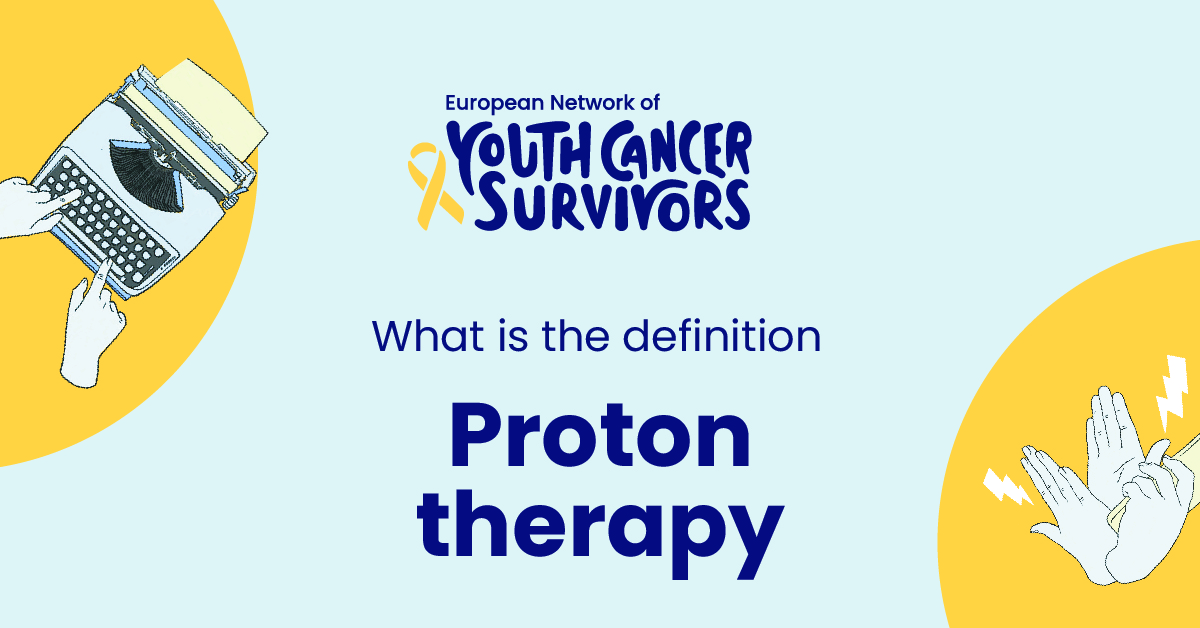
Proton therapy, also known as proton beam therapy, is a type of radiation therapy that uses protons instead of x-rays to treat cancer and other diseases. It’s an advanced form of radiation therapy that aims at destroying cancerous tissues with a high level of precision.
Historical Background of Proton Therapy
Interest in the use of protons for treating diseases dates back to 1946 when Robert R. Wilson floated the idea of using high energy protons in radiation therapy. However, it wasn’t until the late 20th century that modern proton therapy really began to emerge, due to technological advances in medical imaging and beam delivery.
Brief Overview of the Concept
Proton therapy takes advantage of the unique properties of protons, whose energy can be controlled so that they release their cancer-killing payload precisely at the site of the tumor. This reduces radiation exposure to the surrounding healthy tissues—a major advantage over conventional x-ray based radiation therapy.
The Definition of Proton Therapy
Explanation of Proton Therapy
Proton therapy is a type of radiation treatment that uses protons, particles with a positive charge, to irradiate diseased tissue, usually in the treatment of cancer. The use of a particle beam for radiation therapy was proposed as early as 1946, however, it wasn’t until recent times that proton therapy became a practical treatment option for a wide range of cancers.
The Science Behind Proton Therapy
The science of proton therapy is rooted in the physics of protons. Proton beams deliver their maximum energy in a focused region called the ‘Bragg Peak’. This allows doctors to use the maximum dose of radiation possible, right at the tumor site, while sparing the surrounding tissues and organs.
The Use of Proton Therapy in Radiation Oncology
Proton therapy has become a significant tool in radiation oncology due to its high precision. It is often used in treating cancers that are close to vital organs or structures, including brain, eye, lung, and pediatric cancers.
The Application of Proton Therapy
Commonly Treated Conditions with Proton Therapy
Proton therapy is used to treat many types of cancers and disorders. Some of these include brain, prostate, lung, and pediatric cancers. It can also be used to treat arteriovenous malformations and other non-cancerous conditions that are near vital organs.
Proton Therapy in Pediatric Cases
Proton therapy has particular applications in pediatrics. It’s often chosen for treating children because it reduces the risk of radiation exposure to growing and developing tissues and organs. This can decrease the risk of secondary cancers and other radiation-related side effects later in life.
Use in Treatment of Certain Types of Cancers
Proton therapy has shown promising results for numerous types of cancers. It is extensively used in treating solid and localized tumors that have not spread to other parts of the body. Moreover, its precision makes it a preferred choice for treating cancers near sensitive organs.
Get to know us better
If you are reading this, you are in the right place – we do not care who you are and what you do, press the button and follow discussions live

Comparison between Proton Therapy and Traditional Radiation Therapy
Comparative Advantages of Proton Therapy
Compared to traditional radiation therapy, proton therapy offers a major benefit: precision. This accuracy minimizes radiation’s impact on healthy tissues and decreases potential side effects. Furthermore, clinical studies have confirmed lower rates of complications and side effects with proton therapy when compared to traditional radiation therapy.
The Limitations and Challenges of Proton Therapy
Despite its many advantages, proton therapy is not without its limitations. These include the cost of treatment, which is generally higher than traditional radiation therapy, and availability, with only a handful of centers around the world offering this modality today. Additionally, protons can interact with biological tissues in ways that are not fully understood, leading to uncertainties in dose distribution.
The Procedure of Proton Therapy
Preparing for Proton Therapy Treatment
Preparation for proton therapy involves a series of steps including a consultation with a radiation oncologist, creation of a treatment plan, and a simulation session to pinpoint the exact treatment areas.
During the Treatment: What to Expect
During the treatment, patients lie down on a specialized table. The proton beam, guided by a machine called a gantry, is directed to the treatment areas. The number and length of treatment sessions vary depending on the type and stage of cancer.
Post-treatment care and Follow-Up
After proton therapy, patients will attend follow-up appointments to monitor their response to the treatment. It also allows the healthcare team to manage any potential side effects and to provide support for the patient’s overall well-being.
The Future of Proton Therapy
Advances in Proton Therapy Technology
Advancements in technology are making proton therapy more accessible and effective. Future advances may include more compact and economical proton therapy systems, as well as further refining treatment planning and delivery techniques.
Future Research and Application in Healthcare
Research is ongoing to broaden the applicability of proton therapy. Clinical trials are examining the use of proton therapy for a wider range of cancers, and studies are being conducted to further understand the biological effects of protons on tissues.
Conclusion
Summary of Key Points
In conclusion, proton therapy is an advanced form of radiation therapy that offers greater precision in delivering radiation, thus reducing side effects and improving the quality of life for cancer patients. However, like any treatment modality, it has its limitations and challenges—which are being addressed through continuous research and technological advancements.
Importance of the Evolving Nature of Proton Therapy in Cancer Treatment
The evolving nature of proton therapy reflects the medical community’s commitment to improving cancer treatment. As technology progresses and more is understood about the effects of proton therapy, it is expected to become a standard of care for many more cancer patients worldwide—bringing us closer to a future where cancer is not a death sentence, but a curable disease.
FAQs:
Q1: What is Proton therapy and how does it work?
Proton therapy is a type of radiation therapy used to treat cancer. It works by using high-energy protons, which are positively charged particles, to target and destroy cancer cells. Unlike traditional radiation therapy, which uses X-rays or photons, proton therapy delivers radiation with precision, minimizing damage to surrounding healthy tissues. Protons are accelerated to a specific energy level and directed at the tumor, where they deposit their energy, causing damage to the DNA of cancer cells and preventing them from growing and dividing.
Q2: What types of cancers can be treated using Proton therapy?
Proton therapy can be used to treat various types of cancers, including but not limited to:
- Brain tumors
- Spinal cord tumors
- Head and neck cancers
- Prostate cancer
- Lung cancer
- Breast cancer
- Pediatric cancers
- Eye tumors (ocular melanoma)
- Liver cancer
- Pancreatic cancer
Proton therapy is particularly beneficial for tumors located near critical organs and structures or in pediatric patients, as it reduces the risk of damaging healthy tissues.
Q3: What are some of the advantages of Proton therapy compared to traditional radiation therapy?
Proton therapy offers several advantages over traditional radiation therapy:
- Precision: Protons can be precisely controlled to deposit their energy within the tumor, minimizing damage to surrounding healthy tissues.
- Reduced side effects: The ability to spare healthy tissues leads to fewer short-term and long-term side effects, such as radiation-induced secondary cancers.
- Higher dose delivery: Protons can deliver higher doses of radiation to the tumor, increasing the likelihood of destroying cancer cells.
- Pediatric treatment: Proton therapy is especially useful for treating pediatric cancers, as it minimizes radiation exposure to growing tissues, reducing the risk of developmental problems.
- Tumors near critical structures: It’s ideal for tumors located near critical organs or structures where sparing surrounding tissue is crucial.
Q4: Are there any risks or side effects associated with Proton therapy?
While proton therapy is generally well-tolerated, it can still have side effects, which are usually mild and specific to the treated area. Common side effects include fatigue, skin irritation, and digestive issues, depending on the location of the tumor. Serious side effects are rare but can occur, such as damage to nearby healthy tissues. The risk and severity of side effects vary depending on the type of cancer, the location of the tumor, and the patient’s individual characteristics.
Q5: What is the future outlook of Proton therapy in medical treatment?
The future outlook for proton therapy in medical treatment is promising. Research and technological advancements continue to refine proton therapy techniques, making it more accessible and effective. Some key developments include:
- Research into new indications: Ongoing research is exploring the use of proton therapy for additional cancer types and as a part of combined treatment approaches.
- Reduced costs: Efforts to reduce the cost of proton therapy systems and increase their availability are making this treatment more accessible to a wider range of patients.
- Improved precision: Advances in imaging and treatment planning are enhancing the

















Comments
Thank you. Comment sent for approval.
Something is wrong, try again later